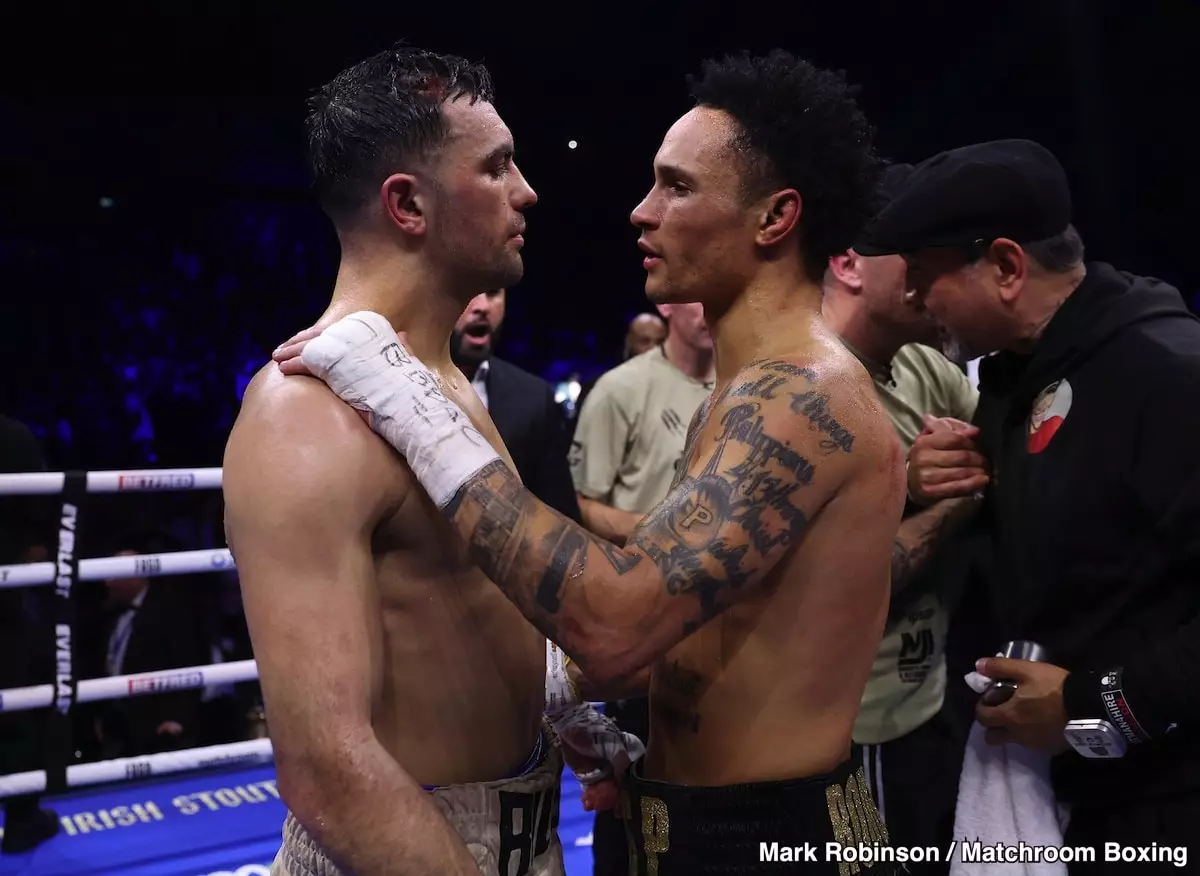By BoxingHit Staff-
British boxer Jack Catterall, with a professional record of 30 wins and only one loss, is a name that has generated much talk in the boxing community. Despite his solid statistics, Chris Algieri, a former world champion, has voiced skepticism over Catterall’s fighting style and its effectiveness in the North American boxing scene. The crux of Algieri’s argument rests on the notion that Catterall’s cautious, defense-oriented approach may not bear fruit against more aggressive fighters—an observation that could dictate Catterall’s future in the sport.
Catterall’s strategy, which focuses heavily on defense and minimal engagement, has allowed him to win fights in the UK. However, the North American boxing audience, famed for favoring bolder, more offensive styles, may not be as forgiving. Algieri points out that Catterall’s tendency to retreat rather than engage could lead to unfavorable decisions in the U.S., where momentum and aggression weigh more heavily with judging panels. This significant cultural divergence in boxing appreciation suggests a potential uphill battle for Catterall if he aspires to establish himself in the North American market.
What makes Catterall an enigma is a blend of his considerable boxing skills—evidenced by his technical jab and left hand—and his deliberate choice to rely on these instead of engaging more deeply. Algieri emphasizes that while Catterall might display flashes of brilliance, his lack of willingness to take risks or press the action could severely limit his prospects against fighters who are not afraid to step into the offensive.
He contrasts Catterall with fighters like Shakur Stevenson, a boxer who, despite a similar defensive style, has found success in the U.S. This success can be attributed to Stevenson’s ability to blend style with an engaging performance that keeps audiences on their toes. Therefore, Catterall’s shortcomings in this area could lead to a stagnant fan base, potentially limiting his entry into the lucrative U.S. market.
Eddie Hearn, Catterall’s promoter, finds himself at a crossroads as he attempts to navigate the complexities surrounding his fighter. Algieri speculated that upcoming bouts against formidable opponents—such as IBF light welterweight champion Liam Paro—will test Catterall’s resilience and adaptability. Paro, praised for his fighting style and recent performance, could provide Catterall with the type of challenge he has yet to encounter.
While Hearn may be pushing for high-profile bouts for Catterall, the real question arises as to whether these matchups will yield success. Algieri highlights the distinct possibility of Hearn bringing Catterall to the UK after a promising performance from Paro or Richardson Hitchins, both competitors with significant momentum. Yet, the prospect of Catterall fighting in America, particularly against fighters who are not as focused on defensive boxing, raises red flags concerning his overall marketability.
The crux of Algieri’s argument exposes a broader issue within the sport that extends beyond Catterall himself. The biases of judges can vary based on geographical location, often leading to discrepancies in scoring. In the UK, Catterall’s defensive style may be appreciated and understood, but in America, it may well lead to him heading home without the decisions he needs to further his career.
The North American appreciation for aggressive boxing could prove detrimental for Catterall should he attempt to replicate his UK success. With a track record built on careful matchmaking and strategic maneuvering, the transition into a more Australian-centric audience with a pronounced taste for aggressive, entertaining bouts could spell disaster.
Looking ahead, Jack Catterall needs to contemplate not only the opponents he faces but also the strategic adjustments required for greater success. The insistence on fighting a cautious, defense-oriented battle may ultimately hinder him from establishing himself as a major player in boxing’s crowded landscape. As Algieri aptly points out, if Catterall continues to retreat from engagement, he may face a tough reality in the U.S. boxing arena.
For Catterall, the imperative lies in balancing adept technique with a willingness to embrace the aggression expected by North American judges and fans alike. Otherwise, he risks becoming just another fighter lost in translation between two very different boxing cultures. Achieving success in this new context calls for a transformation that he has yet to exhibit—a journey that will be critical as he aspires to reignite his career beyond the UK.


Leave a Reply